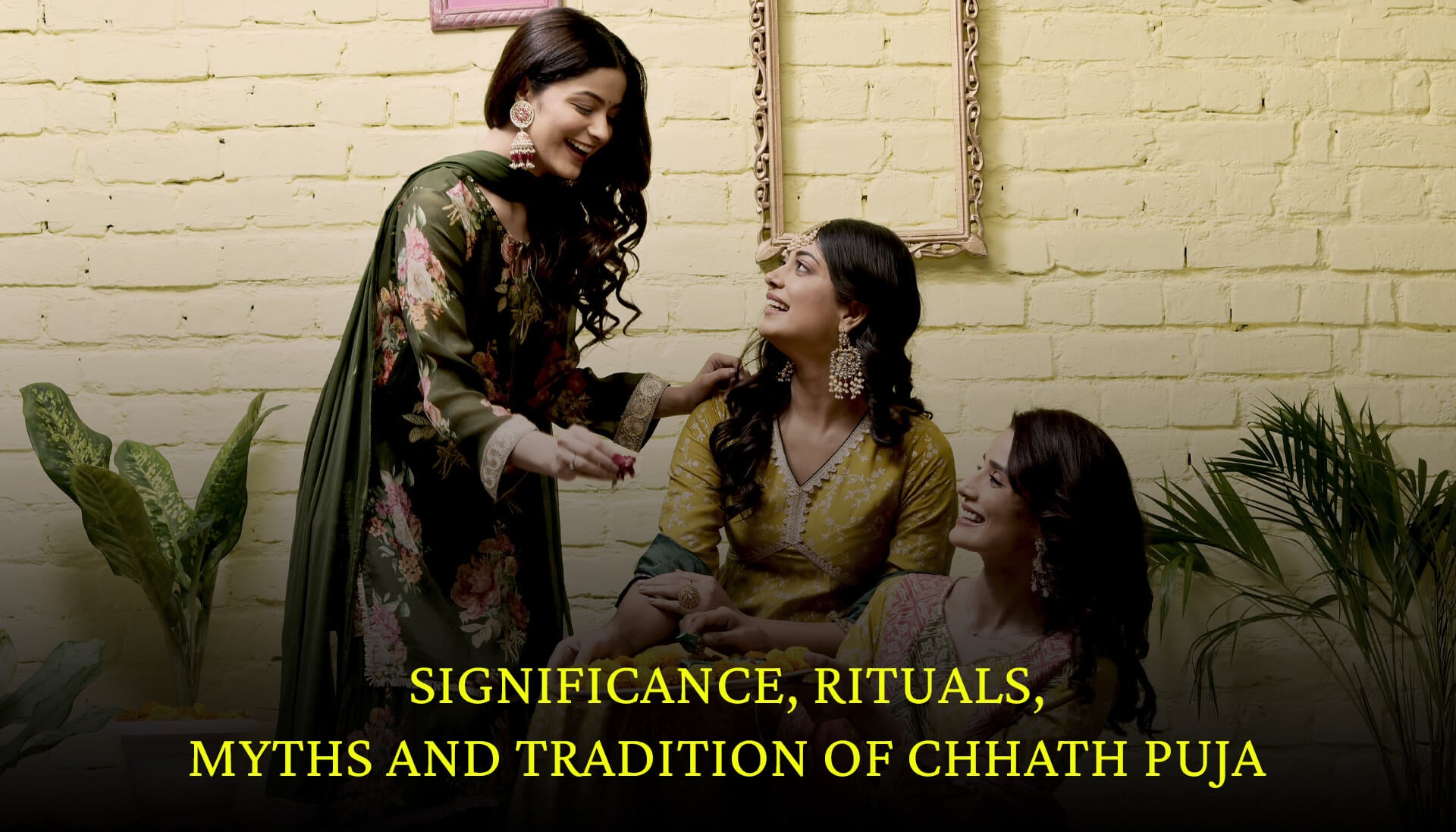How Indians Around The World Celebrate Bhai Dooj
Bhai Dooj, also known as Bhaiya Dooj or Bhau Beej, is a festival celebrated primarily in India and among Indian communities worldwide. This special day, which falls on the second day after Diwali, is dedicated to the bond between brothers and sisters. While the customs and traditions may vary slightly across regions, the underlying sentiment remains the same: a celebration of love, affection, and the protective bond shared between siblings. In this blog, we will explore how Indians around the world celebrate Bhai Dooj, delving into the cultural significance, traditional rituals, and contemporary celebrations that embody this cherished occasion.

Bhai Dooj is rooted in the ancient Hindu tradition of honoring the brother-sister relationship. It is believed that on this day, the sister prays for her brother's well-being and prosperity while performing an aarti (a ritual of worship) and applying a tilak (a mark on the forehead). In return, the brother vows to protect his sister and often gifts her something as a token of his love and appreciation. The festival is an extension of the joyous celebrations that occur during Diwali, symbolizing the completion of the festivities with a focus on familial ties.

1. The Tilak Ceremony
The most significant ritual of Bhai Dooj is the tilak ceremony, where the sister applies a ceremonial mark on her brother's forehead using a mixture of vermilion, rice, and sometimes even turmeric. This ritual signifies the sister’s blessings for her brother’s success and protection from harm. In many families, this is followed by the brother receiving gifts from his sister, symbolizing his love and care for her.
2. The Aarti and Prayers
After the tilak, the sister performs an aarti, singing hymns or prayers to invoke blessings from the deities for her brother's happiness and health. This spiritual element of the celebration reinforces the importance of family and the sacred bond shared between siblings.
3. Exchanging Gifts
Gifts play a crucial role in the celebrations of Bhai Dooj. Brothers often give their sisters jewellery, clothes, or cash as tokens of their affection. In contrast, sisters may prepare delicious meals or sweets for their brothers, expressing their love through culinary delights. This exchange of gifts enhances the festive spirit and strengthens the emotional ties that bind siblings together.

Regional Variations in Celebrations
Bhai Dooj is celebrated across India, with each region adding its unique flavor to the festivities. Here’s a glimpse into how various states and communities observe this occasion.
1. Maharashtra
In Maharashtra, Bhai Dooj is celebrated as Bhau Beej. Sisters prepare a feast for their brothers, which includes traditional delicacies like puran poli and various sweets. It is common for brothers to visit their sisters’ homes, and special prayers are offered for their well-being. The essence of this celebration lies in familial love and the joy of togetherness.

2. North India
In Northern India, the rituals of Bhai Dooj are deeply rooted in tradition. The day begins with the sister performing the tilak ceremony, followed by a grand meal that often features an array of dishes, including sweets like barfi and laddoos. Brothers typically reciprocate by gifting their sisters with items they desire, showcasing the care and affection that defines the sibling relationship.
3. South India
In South India, Bhai Dooj is celebrated with a similar sentiment, though the rituals may differ. The focus is on family gatherings, where siblings come together to share meals and celebrate their bond. Traditional dishes vary by region but often include rice, curries, and an array of sweets. The celebration emphasizes community and unity among family members.
4. International Celebrations
Indian communities around the globe also celebrate Bhai Dooj, albeit with local adaptations. In countries with significant Indian diasporas, such as the United States, Canada, the United Kingdom, and Australia, the festival is often celebrated with a blend of traditional rituals and contemporary gatherings. Families organize get-togethers, prepare traditional dishes, and share stories that emphasize the significance of sibling bonds.

Modern-Day Celebrations of Bhai Dooj
With the changing times, Bhai Dooj has evolved, and modern celebrations often reflect contemporary lifestyles while preserving the essence of the festival. Here are some ways in which Bhai Dooj is celebrated today:
1. Virtual Celebrations
In the digital age, many siblings separated by distance use technology to celebrate Bhai Dooj. Video calls and social media platforms allow families to connect and share their celebrations. Sisters may send virtual gifts, or brothers might arrange for delivery of traditional sweets to their sisters' homes, ensuring that the spirit of the festival remains intact despite geographical barriers.
2. Fashion and Gifting Trends
As fashion evolves, so do the ways in which siblings express their affection through gifts. Trendy clothing, including ethnic wear like lehengas, kurta sets, and sharara suits, are popular gifts exchanged during Bhai Dooj. Sisters might opt for fashionable crop tops with skirts or co-ord sets to look stylish while celebrating this special occasion.
3. Charitable Giving
In recent years, there has been a growing trend among Indian families to incorporate charitable giving into their Bhai Dooj celebrations. Many siblings choose to donate to local charities or contribute to causes they care about as a way to honor their relationship. This act of giving back reflects the values of compassion and gratitude that the festival embodies.

At its core, Bhai Dooj is more than just a festival; it is a heartfelt celebration of the bond between brothers and sisters. Whether through traditional rituals, modern celebrations, or acts of kindness, the essence of Bhai Dooj lies in expressing love, gratitude, and the promise of protection and support.
Tips for Celebrating Bhai Dooj in 2024
As Bhai Dooj approaches in 2024, here are some tips to make your celebrations memorable:
1. Plan Ahead
Prepare for the festival by planning your menu and gifts in advance. Consider your brother's preferences when choosing gifts or dishes, ensuring a personalized touch.
2. Get Creative with Gifts
When it comes to giving, think beyond the box. Personalized items, such as custom jewelry or monogrammed accessories, can make for thoughtful presents.
3. Celebrate Virtually If Needed
If you cannot be with your sibling in person, embrace technology to share the celebration. Virtual gatherings can be just as meaningful and allow you to connect regardless of distance.
4. Incorporate Tradition with Modernity
Blend traditional rituals with modern elements. Whether it’s a fusion menu or a contemporary take on traditional attire, find ways to honor both the past and the present.
Bhai Dooj is a beautiful celebration of sibling love and commitment, deeply rooted in Indian culture. Regardless of where they are in the world, Indians continue to honor this bond with unique celebrations that showcase love, gratitude, and familial ties. As we look forward to Bhai Dooj in 2024, may the festivities be filled with joy, laughter, and cherished moments, strengthening the precious relationship between brothers and sisters.
FAQs
1. What is Bhai Dooj?
Bhai Dooj is a Hindu festival celebrated two days after Diwali, dedicated to honoring the bond between brothers and sisters. On this day, sisters pray for their brothers' well-being and prosperity while performing rituals such as tilak and aarti. In exchange, brothers offer their sisters presents and swear to keep them safe.
2. When is Bhai Dooj celebrated in 2024?
In 2024, Bhai Dooj will be celebrated on November 15th, following the Diwali festival. The date may vary each year depending on the Hindu lunar calendar, so it's important to check the specific date based on the year.
3. What are the traditional rituals of Bhai Dooj?
The main rituals of Bhai Dooj include:
-
Tilak Ceremony: The sister applies a ceremonial mark (tilak) on her brother's forehead.
-
Aarti: The sister performs an aarti while praying for her brother's happiness and health.
-
Gift Exchange: Brothers give gifts to their sisters, while sisters prepare special meals or sweets for their brothers.
4. How is Bhai Dooj celebrated in different regions of India?
While the core essence of Bhai Dooj remains the same, celebrations vary by region. In Maharashtra, it is known as Bhau Beej, and families enjoy traditional dishes. In North India, the emphasis is on family gatherings and elaborate meals. In South India, siblings come together to celebrate with local cuisine. Indian communities worldwide adapt these traditions, incorporating local customs and practices.
5. What are some modern ways to celebrate Bhai Dooj?
Modern celebrations of Bhai Dooj can include:
-
Virtual Celebrations: Families can connect via video calls if they are apart.
-
Stylish Gifting: Many siblings opt for trendy clothing items like lehengas or ethnic co-ord sets as gifts.
-
Charitable Giving: Some families incorporate charitable donations into their celebrations, supporting causes that matter to them.
6. What should I consider when choosing a gift for my sibling on Bhai Dooj?
When selecting a gift for Bhai Dooj, consider your sibling's personal preferences and interests. Thoughtful gifts such as personalized items, trendy ethnic wear, or experiences (like a spa day or a special outing) can make your gesture more meaningful. Aim for gifts that reflect your bond and convey your love and appreciation.


